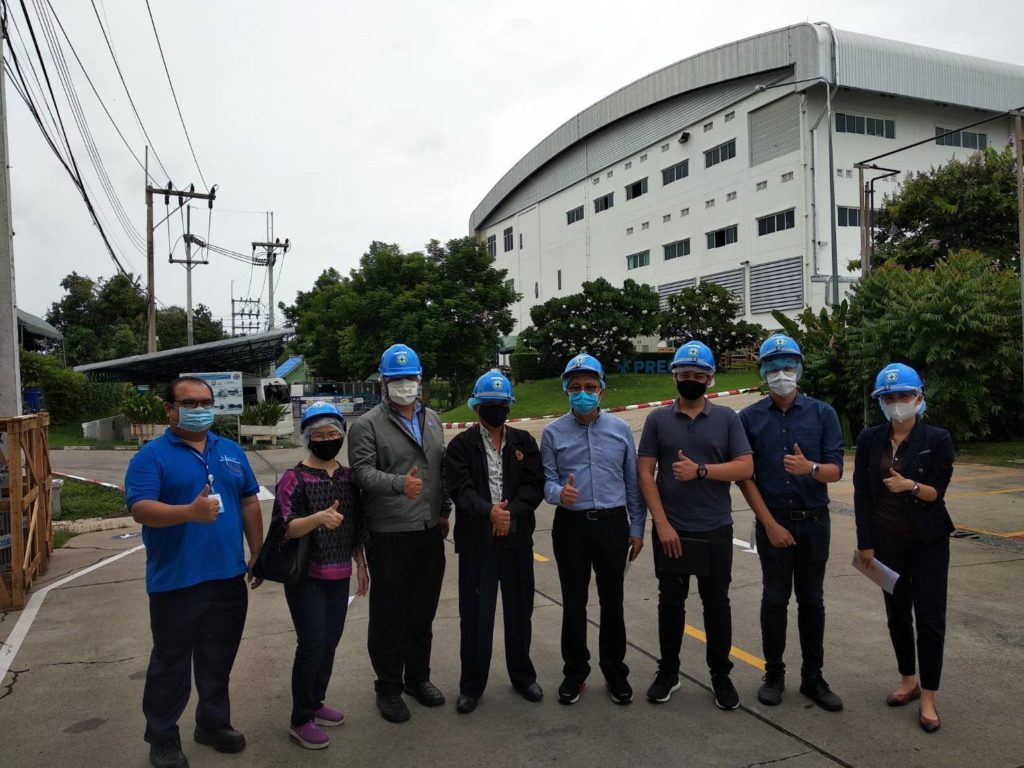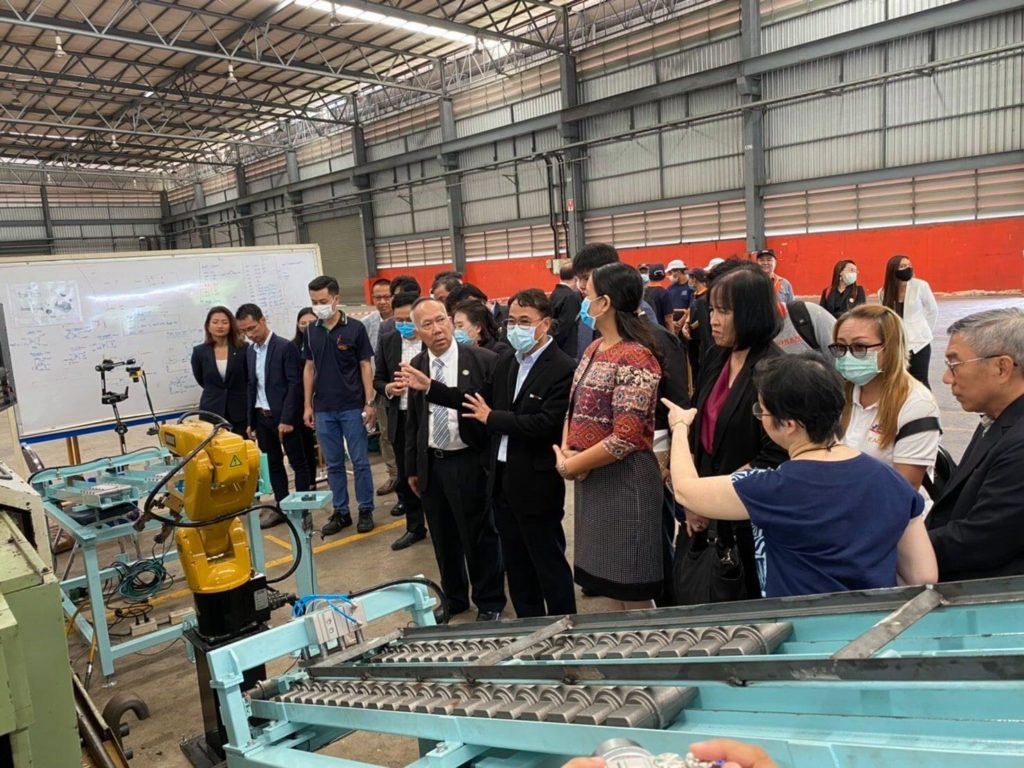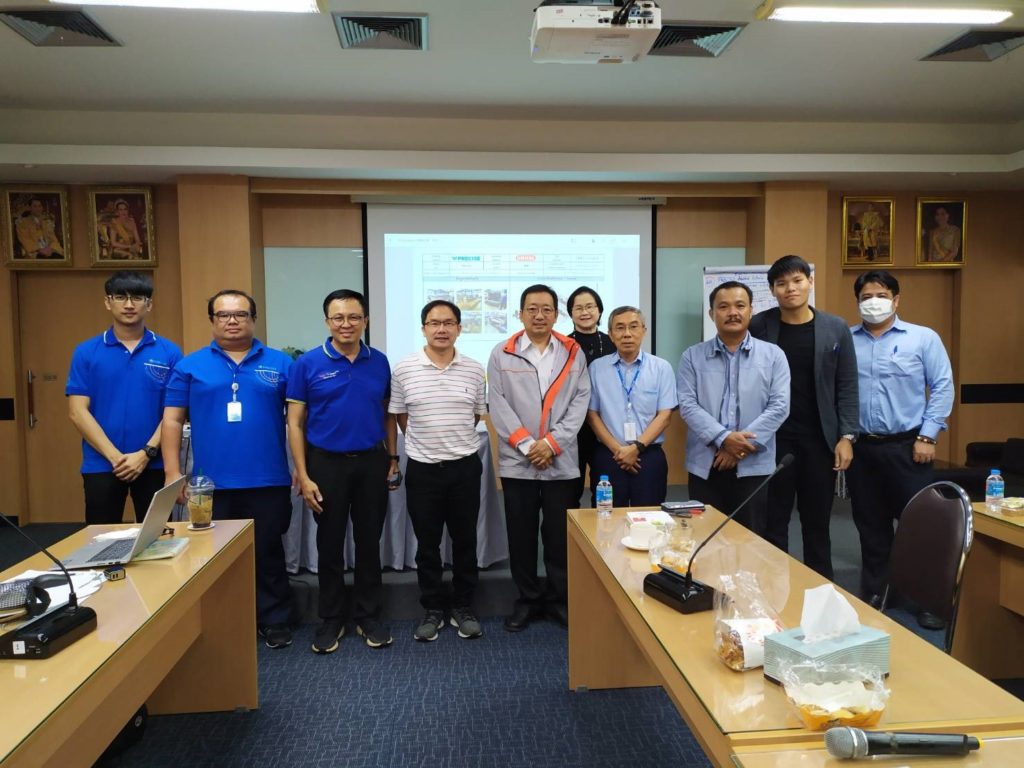
Why is cluster development important in Thailand?
Thereafter, there has been a surge of interest in clusters as drivers of economic growth and hubs of innovation. In Thailand, The Department of Industrial Promotion (DIP), Ministry of Industry, which is the main agency responsible for driving the formation and development of clusters. There is operated according to the Memorandum of Understanding (MOU) effective June 10th, 2004 and under the framework of National Committee on Competitive Advantage (NCC). DIP has been initiating and supporting cluster development since 2006. The cluster development policy is intended to enhance the competitiveness and local economic development as well as inclusive growth.
The industrial clustering is widely regarded among many sectors as an important to economic trend of Thai Industrial Sectors. According to Thailand’s Eastern Economic Corridor (EEC) is poised to be the Thailand hub for trade, investment, and regional transportation, alongside being a strategic gateway for SE Asia. The EEC is slated to attract approximately US$46 billion in investments focused on “S-curve” industries – namely, next-generation automotive, aviation and logistics, smart electronics, medical tourism, food, robotics, agriculture, and biotechnology. Thailand has identified these 10 industries, growth of which would ultimately transform them to be a developed nation. The S-curve industries are divided into two categories – S-curve and New S-curve
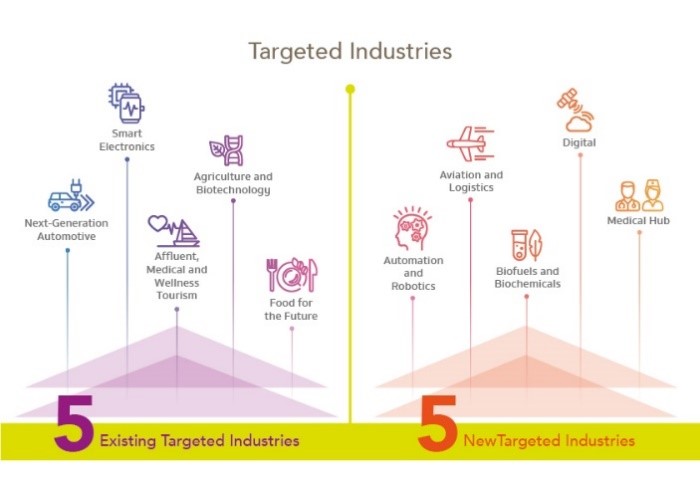
In 2020, Thai CEFistas as Quality Advantage co.,ltd. worked with Department of Industrial Promotion (DIP) , Ministry of industry on the cluster development project , which project is about improving competences and establishing coordination and linkages driven robotics and automation industry. The cluster project initiative is an economic model that is based on innovation, creativity, high-quality services, and new technology. However, the group of interconnected companies, suppliers, service providers and associated institutions in a particular field, linked by externalities of various types, the industrial cluster as economic concentration of manufacturing activities which produce and sell the domain and complementary products and having common problems and opportunities. The stakeholders would participate to setup common goals, share information and knowledge, cooperation research and development. The cluster development process is considered in the key strategies of economic growth and sustainable development. What are the benefits in Thai economies
What are the benefits in Thai economies?
The benefits of establishing cluster as an approach for business improvement, there is strong evidence that forces into cluster brings additional advantages for SMEs. The benefits of clustering in improving SMEs efficiency as summarized as follows:
-
Access knowledge and information of resource and creation of knowledge that exchange between each other.
The companies have bargaining power to purchase raw materials at a low price.
The companies could cooperate to develop labor skills and gain the benefits form cost reduction from workforce performance development.
Increase productivity that upgrade production process more efficiency and effectiveness.
More rapid innovation through cooperative research and competitive striving.
New business formulation among members
Market expansion filling in niches and expanding the boundaries of the cluster map.
Cluster Development Phasing
Phase 1 Mobilization and Initial engagement
Encourage cluster members to raise awareness and empathy the important network of initial engagement.
Build understanding of target direction, and foreseeing the importance of jointly activities.
Facilitate capacity-building for organizing teamwork among members.
Establish the leadership team and organizational structure to organize systematically management of cluster members.
Phase 2 Cluster Diagnostics
Develop an understanding of the socioeconomic and institutional environment of the cluster.
Survey, analyze, and diagnose competitiveness of industrial cluster according to Diamond Model and organize into Cluster Map.
Study and analyze industrial situation by using SWOT analysis.
The objectives of cluster diagnostics are developed a strategy related to cluster member participation.
Phase 3 Collaborative Strategy Formulation
Develop the particular cluster that addresses collaborative strategy formulation using analysis of Project Cycle Management approach (PCM) to identify vision, mission and strategies.
Manage multiple projects which define obviously the details of action planning about objectives, activities, desired outcomes, responsible people, time period and budget that agreed upon by stakeholders at the onset.
The strategies of cluster should be consistent and connected to local and regional policies where it is located.
Phase 4 Implementation of Strategy in Action
Implement pilot projects to evaluate its results. There is the project selection guideline as following:
Projects of urgent importance.
Projects that are appropriate according to the situations.
Projects that can apply directly demands of the most cluster members
- Evaluate the performance to be used as a lesson learn in further cluster development.
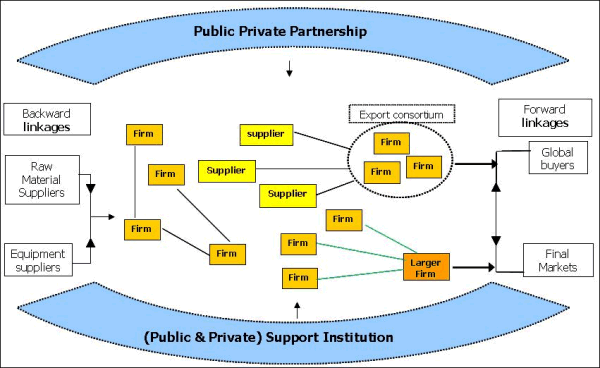
The Roles of Actors in Cluster Map
Enterprises
(located in geographical proximity and share many common features)
Entrepreneurial network initiatives
Innovate ideas and experience sharing
Be the leader in cluster collaboration
Public organizations
(local, regional and national governments and regulatory agencies)
Promoting cluster-based policy advisory.
Improvement in Infrastructure can further enhance enterprise performance in a cluster.
Create factors and environments to facilitate competition and development.
Advocate finance needs to investment and increase competitiveness.
Educational and Research institutions
(vocational schools, universities)
Fulfill the information and knowledge-based economy – research and the training.
Develop human resources to generate more applied knowledge of greater relevance to industry.
Support the innovation, technology and research lead directly to commercialize results
Provide support service as coaches and consultants.
Educational and Research institutions
(business associations, business development service (BDS) providers, financial service providers,
Create a platform to link policies and best practices between public – private collaboration for improving business environment.
Support the major activities that encourage cluster strength to contribute to the dynamic growth of local economies
Support knowledge, information, academic techniques and sources of funds about the role of consulting and support services as consultants and experts.
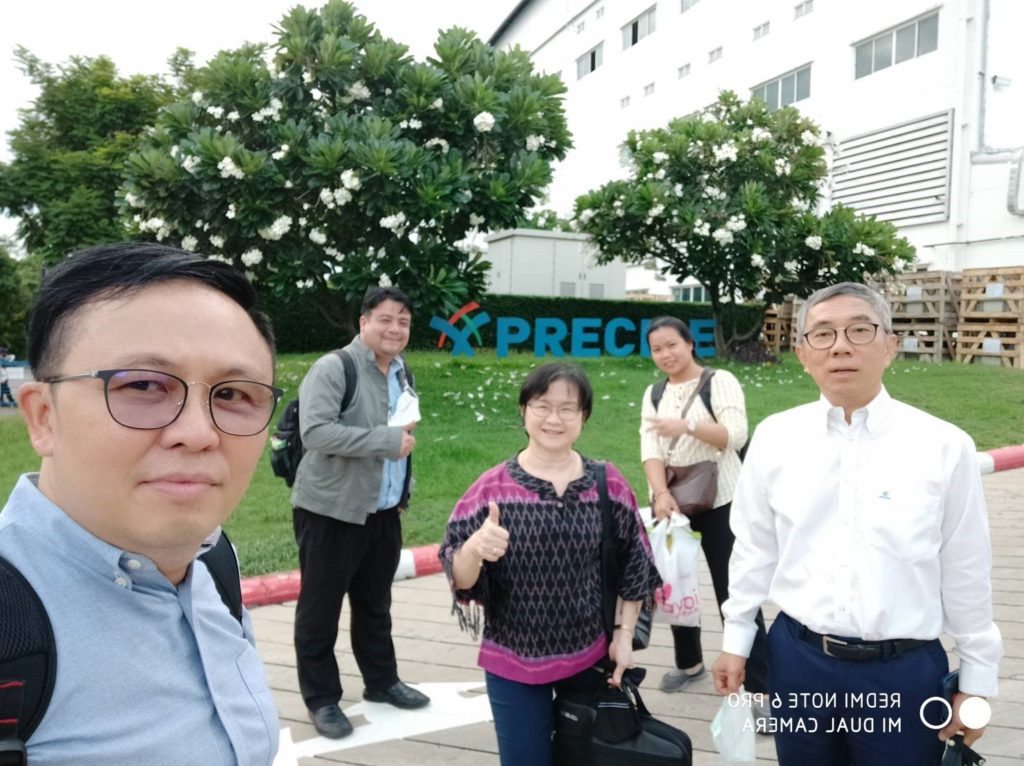
Project Experiences
Robotics and Automation Cluster in Thailand
Improving competences and establishing coordination and linkages driven robotics and automation industry
Implement period: 2019-2020
Donor: Department of Industrial Promotion (DIP), Ministry of industry
Facilitators: Widtoon Chiamchittrong, Malai Chomphuka, Kiti Charuarayanan
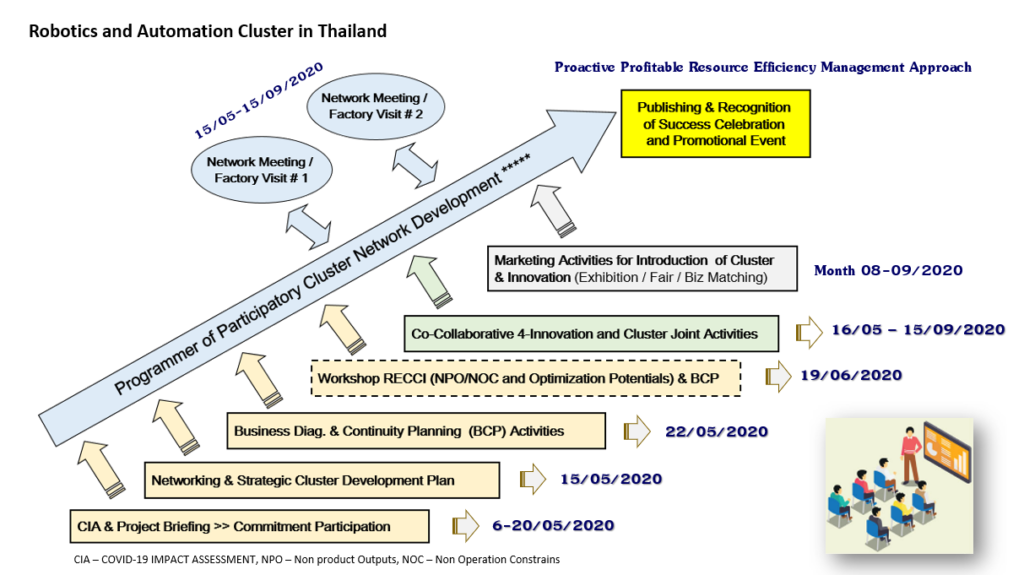
The survey results had been assessed the impact of COVID-19 to business operations of Robotics and Cluster in May 15th 2020 to June 15th 2020.
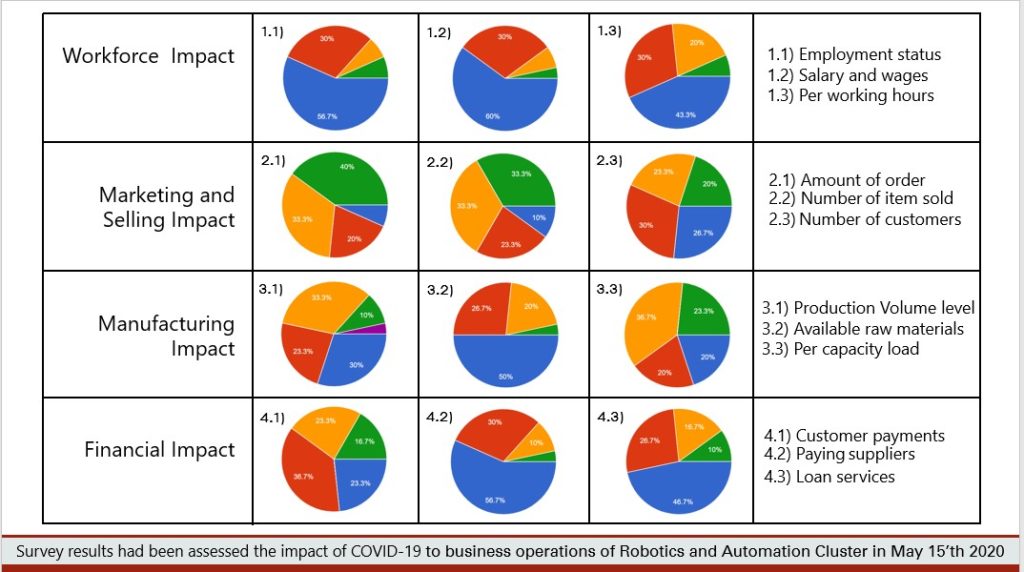
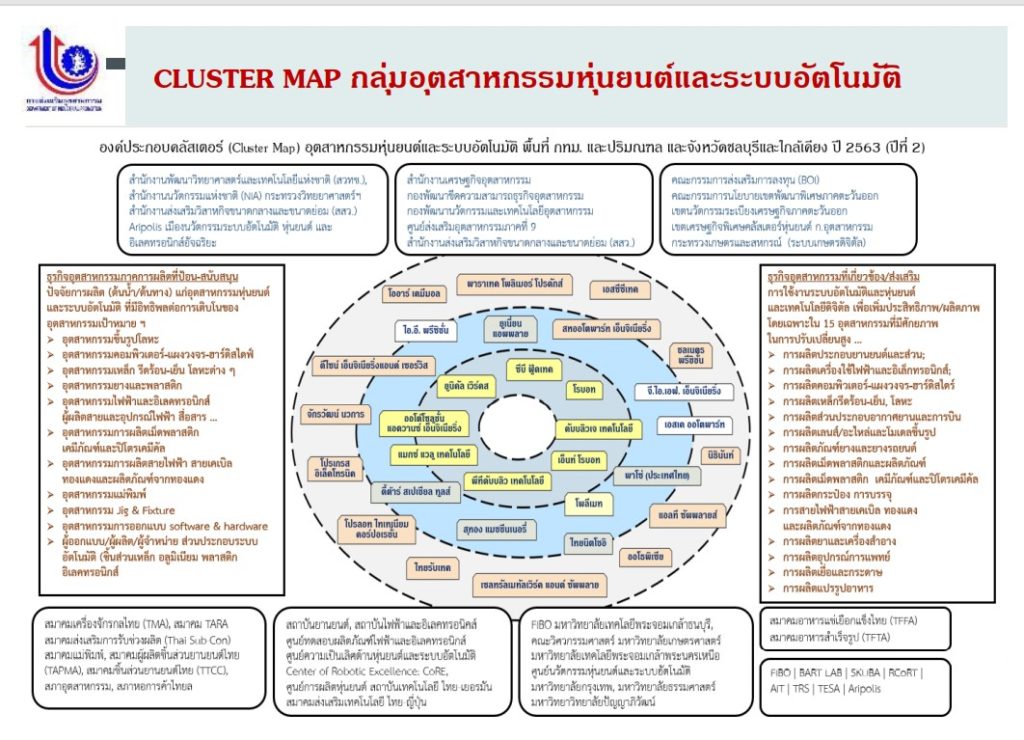
There are several advantages and benefits that can be derived from networks and clusters including obtaining knowledge, trust, economic development, supply pool for raw materials and equipment, specialized labor forces and services, and reduced transaction and production costs.
Access knowledge and information resource and creation of knowledge
Enhance competences and create competitive advantages, create synergies, and lower production cost
Enhancing organizational performance and innovation, regional and national economic development
Establish co-operative linkages between companies, higher specialization
Discussion
Thailand’s cluster development concept should differ from the others framework of developed countries. Lacking of a strong networking, Thai clusters requires additional strategies, achieve the targeted goals. The development principles are based on the concept of strengthening a business ecosystem or cluster ecosystem. Building the proper cluster ecosystem develops the opportunities supporting important goals by coordination and linkages towards Idea creation and the development of innovation in cluster.
The cluster development are long-term continuous missions that members must coordinate improve knowledge improvement and funding to do business. Moreover, it will create entrepreneurial mindset and group collaboration for business growth. Cluster-based firms could share different types of resources under formal and informal agreements, mediated by the relationship to speed up development and better than working as a single organization.
The concentration of interconnected businesses as enterprise network, that provide various specialities in order to develop effective solution. It helps reducing the specialist services from outside. The cluster members could develop cooperative ecosystem such as System Integrators (SI); to expand the industry, data collection, demand conditions for industrial sectors that transform manufacturing processes into robots and automation system.

